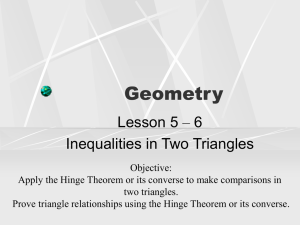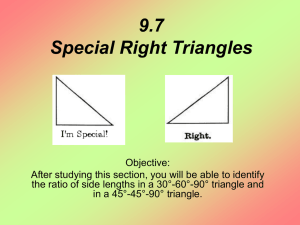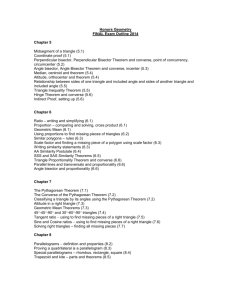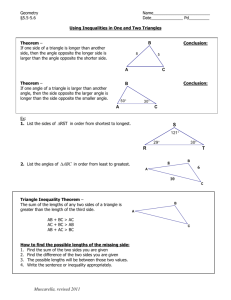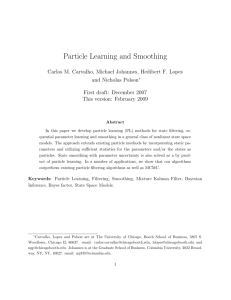File
advertisement
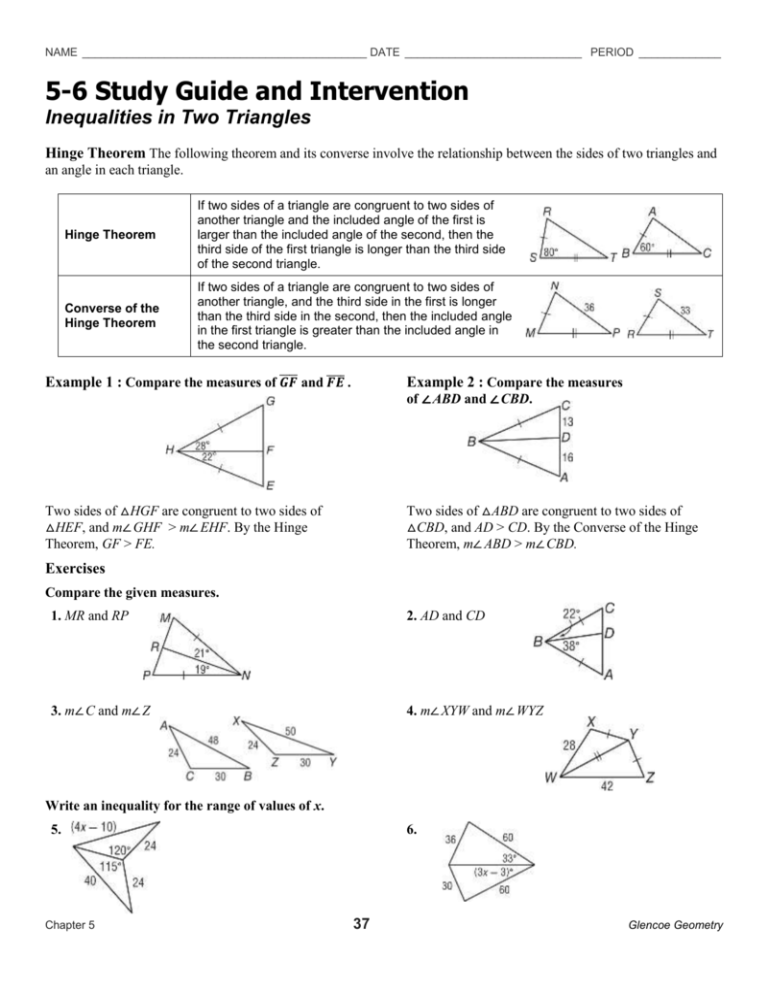
NAME _____________________________________________ DATE ____________________________ PERIOD _____________ 5-6 Study Guide and Intervention Inequalities in Two Triangles Hinge Theorem The following theorem and its converse involve the relationship between the sides of two triangles and an angle in each triangle. Hinge Theorem If two sides of a triangle are congruent to two sides of another triangle and the included angle of the first is larger than the included angle of the second, then the third side of the first triangle is longer than the third side of the second triangle. Converse of the Hinge Theorem If two sides of a triangle are congruent to two sides of another triangle, and the third side in the first is longer than the third side in the second, then the included angle in the first triangle is greater than the included angle in the second triangle. Example 1 : Compare the measures of ̅̅̅̅ 𝑮𝑭 and ̅̅̅̅ 𝑭𝑬 . Example 2 : Compare the measures of ∠ ABD and ∠ CBD. Two sides of △HGF are congruent to two sides of △HEF, and m∠ GHF > m∠ EHF. By the Hinge Theorem, GF > FE. Two sides of △ABD are congruent to two sides of △CBD, and AD > CD. By the Converse of the Hinge Theorem, m∠ ABD > m∠ CBD. Exercises Compare the given measures. 1. MR and RP 2. AD and CD 3. m∠ C and m∠ Z 4. m∠ XYW and m∠ WYZ Write an inequality for the range of values of x. 5. Chapter 5 6. 37 Glencoe Geometry NAME _____________________________________________ DATE ____________________________ PERIOD _____________ 5-6 Study Guide and Intervention (continued) Inequalities Involving Two Triangles PROVE RELATIONSHIPS IN TWO TRIANGLES You can use the Hinge Theorem and its converse to prove relationships in two triangles. Example : Given: RX = XS m∠ SXT = 97 Prove: ST > RT Proof: Statements Reasons 1. ∠ SXT and ∠ RXT are supplementary. 1. Def of linear pair. 2. m ∠ SXT + m∠ RXT = 180 3. m∠ SXT = 97 2. Def of supplementary. 4. 97 + m∠ RXT = 180 4. Substitution 5. m∠ RXT = 83 5. Subtraction 6. 97 > 83 7. m∠ SXT > m∠ RXT 6. Inequality 3. Given 8. RX = XS 7. Substitution 8. Given 9. TX = TX 9. Reflexive Property 10. ST > RT 10. Hinge Theorem Exercises Complete the proof. Given: rectangle AFBC ED = DC Prove: AE > FB Proof: Statements Reasons 1. rectangle AFBC, ED = DC 1. Given 2. AD = AD 2. Reflexive Property 3. m∠ EDA > m∠ ADC 3. Exterior Angle Inequality 4. 5. 6. AE > FB 4. Hinge Theorem Chapter 5 5. Opp sides in rectangle are ≅. 6. Substitution 38 Glencoe Geometry
